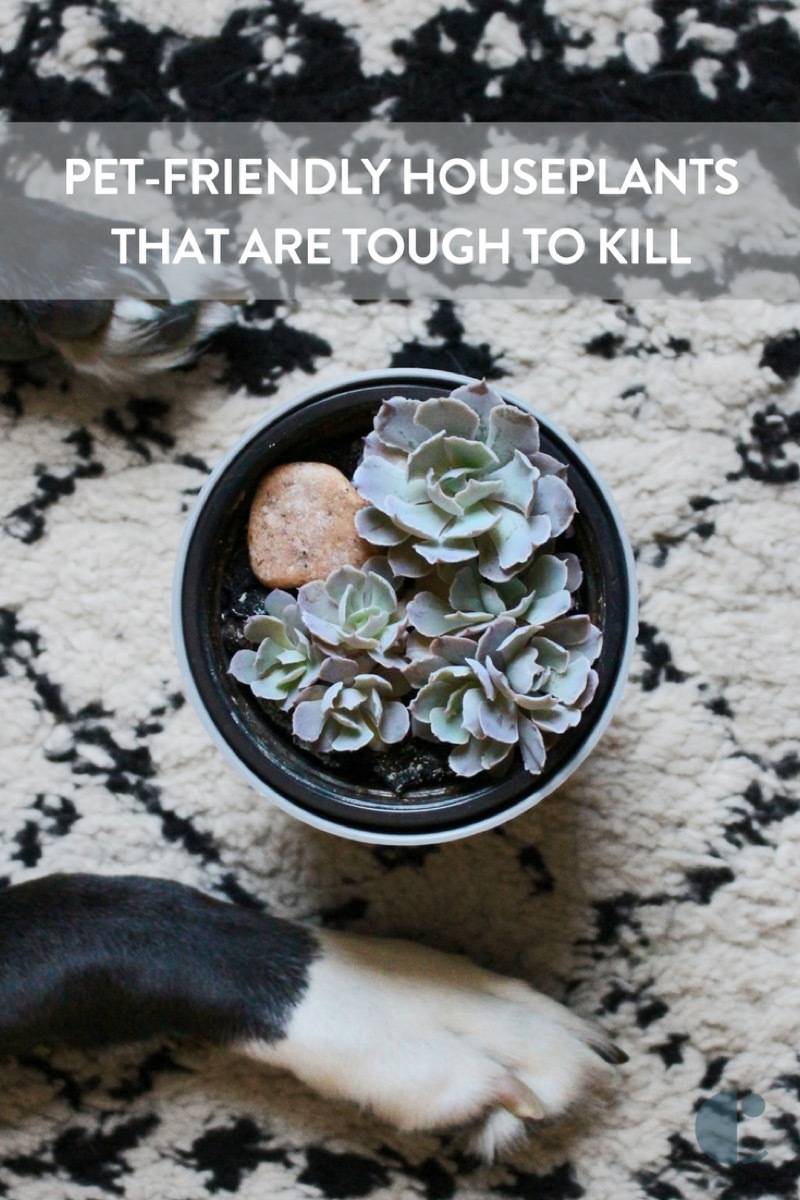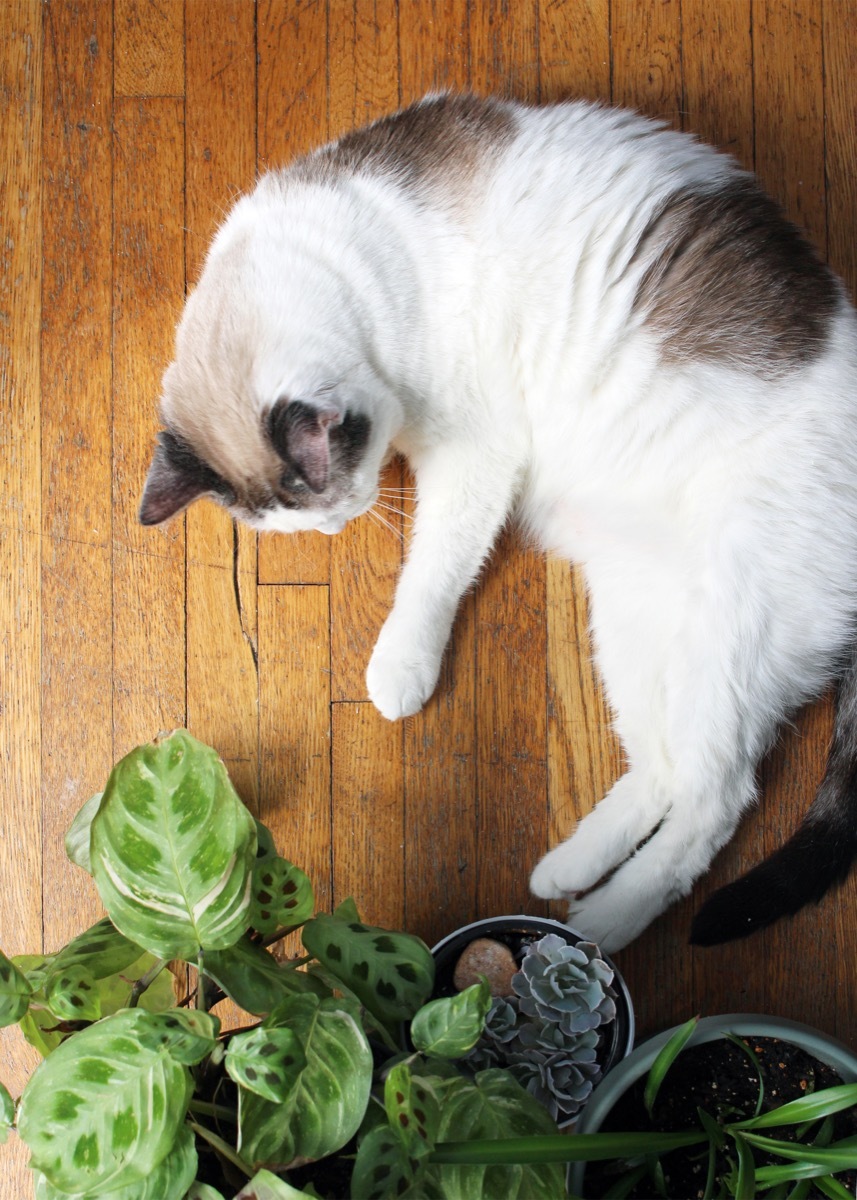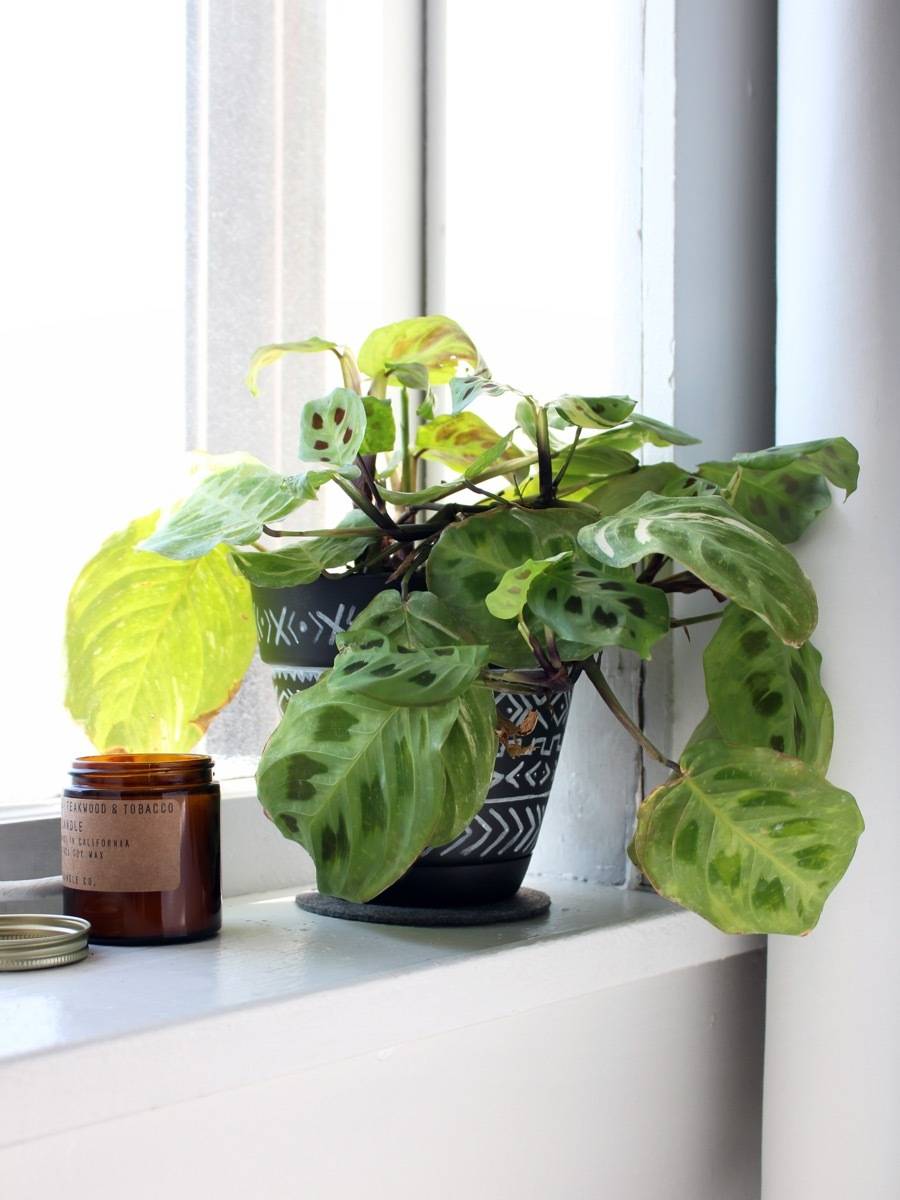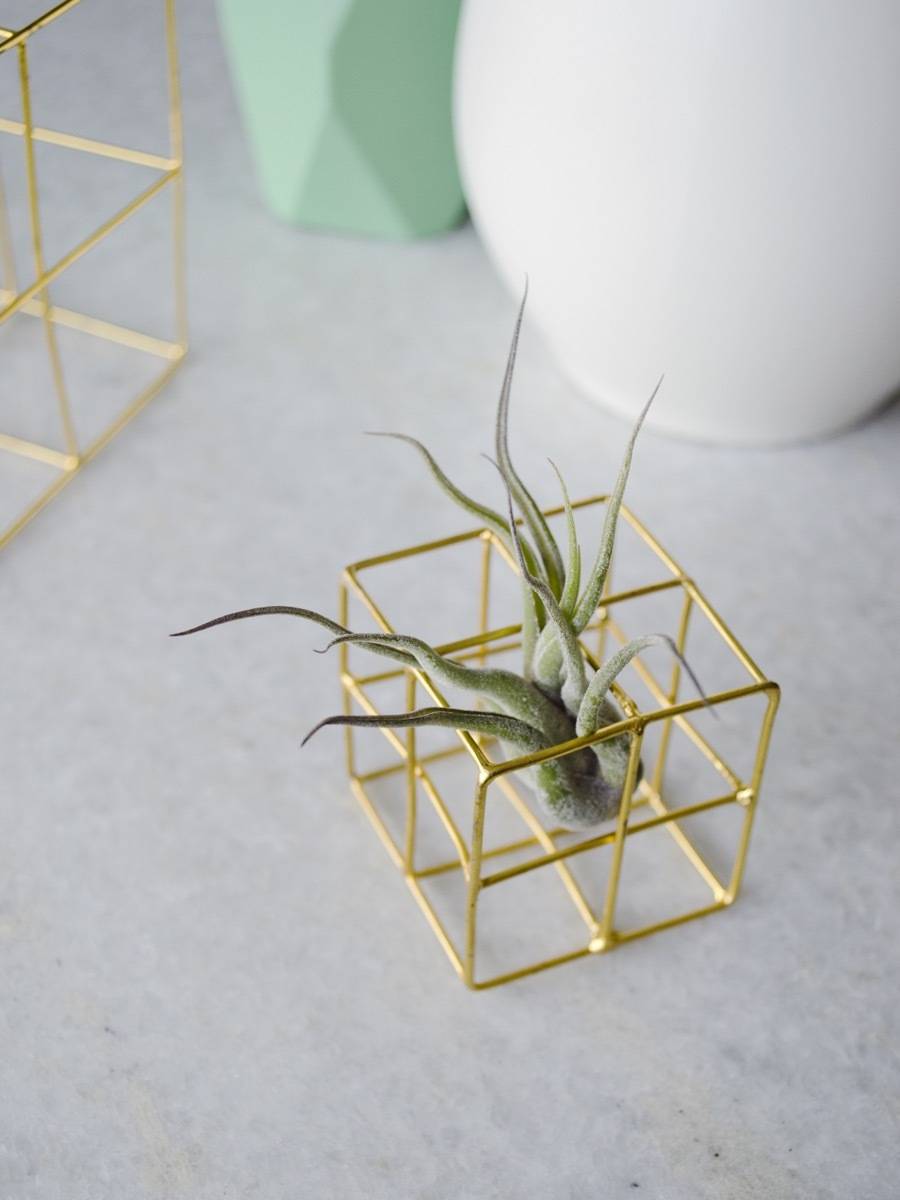I’ve seen this phrase tumbling around on the internet for a while now: “Plant Lady is the New Cat Lady.” To that I say, why not both?
I only say that because I am a die-hard cat lover who has recently discovered her love of indoor jungles. The good news is you can totally go crazy in both cat and plant departments—you just have to be smart about it and ensure you bring home non-toxic plants
There are plenty of easily-accessible, popular houseplants out there that are non-toxic to both cats and dogs. My green collection has been growing, and here are a few of my current favorite pet safe houseplants.
Maranta or Prayer Plant (Maranta leuconeura)
- Safe for dogs
- Safe for cats
- Indirect sunlight, partial shade
- Frequent watering, keep soil moist
First up on our list of pet-friendly plants is the Maranta. How funky are the big green leaves on this guy? As tropical native, the Prayer Plant grows low, dislikes direct sunlight, and needs frequent watering.
The coloring on this plant is bold, and as such it can act as a statement piece on a shelf or ledge. Great for the boho-home, it visually takes itself pretty seriously.
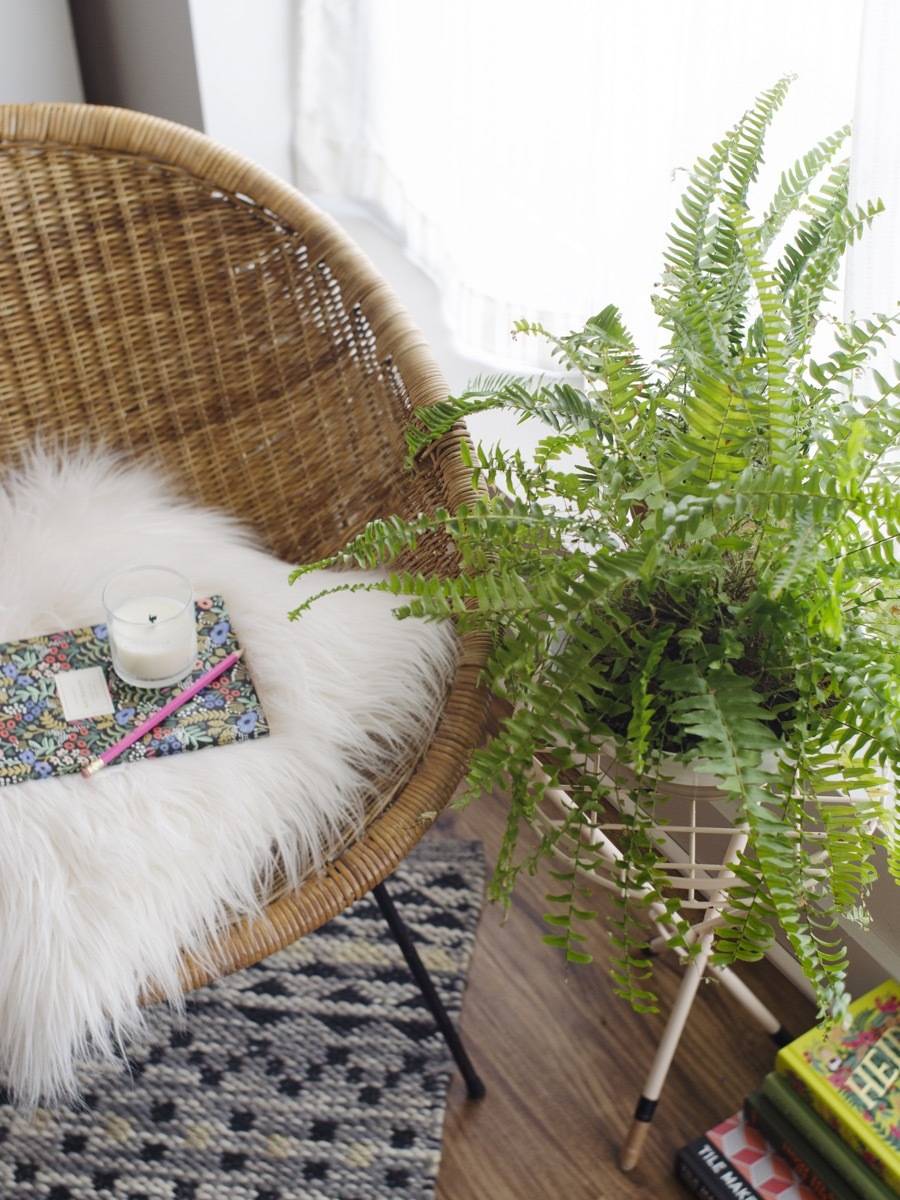
Boston Fern (Nephrolepis exalta bostoniensis)
- Safe for dogs
- Safe for cats
- Indirect sunlight
- Frequent watering / keep soil moist
Fluffy, full, and fern-tastic, you can’t go wrong with this overzealous plant. While some may think of the Boston Fern as the weed-of-the-woods due to its abundance on the floors of northern forests, on closer inspection it proves to be quite a versatile plant.
It can grow quite large (from 2-3 feet indoors), so give it ample room to spread its limbs – try hanging, or placing it near the edge of a shelf. Its enthusiasm goes well with interior design styles ranging from bohemian to tropical.
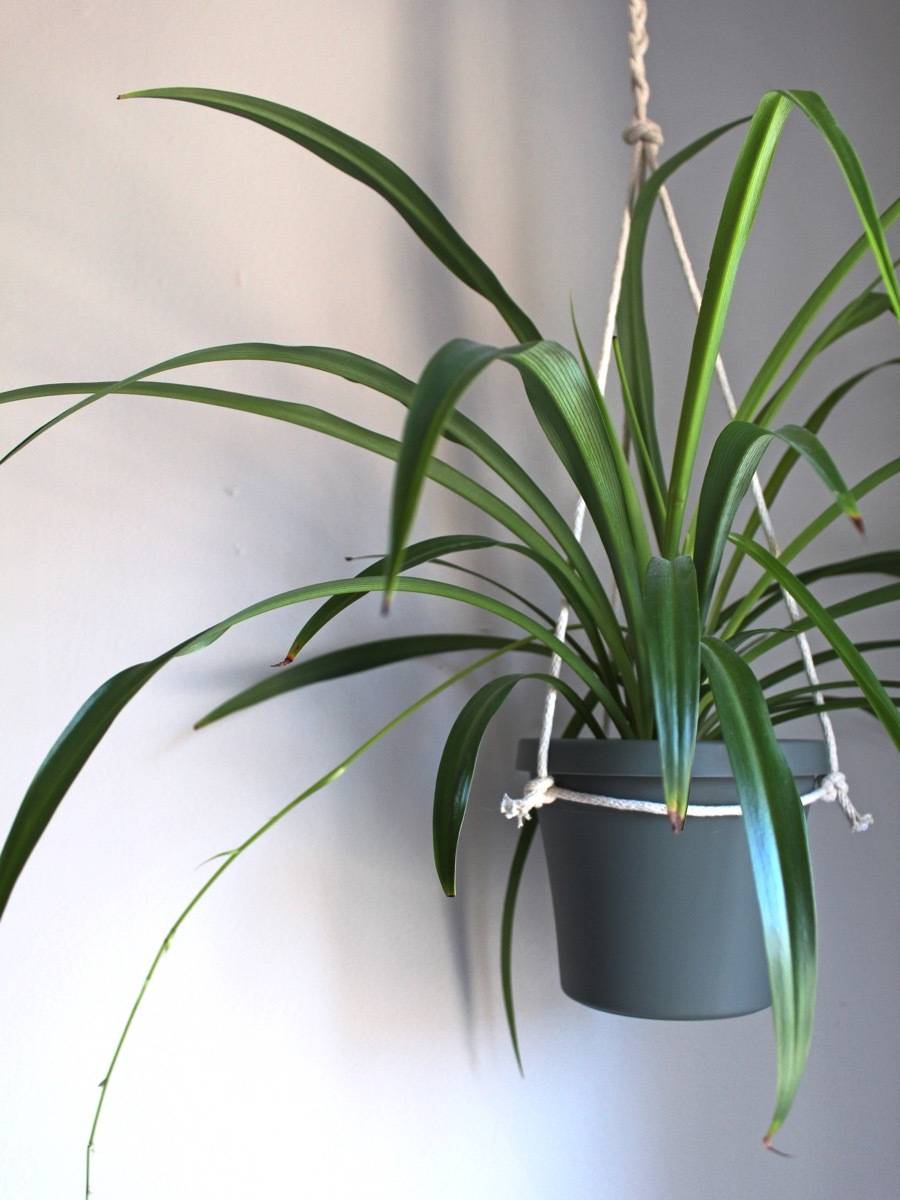
Spider Plant (Chlorophytum comosum)
- Safe for dogs
- Safe for cats*
- Indirect sunlight
- Semi-frequent watering / water when soil is dry
The spider plant is a great low-maintenance plant for newbie houseplant parents. It’s hearty, doesn’t require much watering, and only needs medium light.
Growing in both plain green and white-striped varieties, the spider plant goes well with most types of home decor, from farm house to beach house.
*Spider plants, while completely non-toxic for both cats and dogs, actually contain mild hallucinogenic properties. If you’ve owned both a cat and a spider plant at the same time, you may have noticed how attracted kitty is to the leaves.
When ingested, the effects are similar to catnip. If you want to keep your spider plant intact, keep it out of reach from your furry friends. Luckily these plants were seemingly made for a hanging basket!
Air Plant (Tillandsia)
- Safe for dogs
- Safe for cats
- Bright, indirect light
- Semi-frequenting watering, 12 hour soaking bath every 10-14 days
The Tillandsia genus has picked up some major steam in the past few years. Everywhere you look you can find an air plant, and fortunately they’re safe for both cats and dogs.
These pet-friendly plants are a bit on the delicate side, so it’s best not to let pets use them as chew toys, but you can rest easy knowing that they won’t do any harm to your furry roommates.
Light and, as the name would suggest, airy, these teeny plants are perfect for that minimally green look.
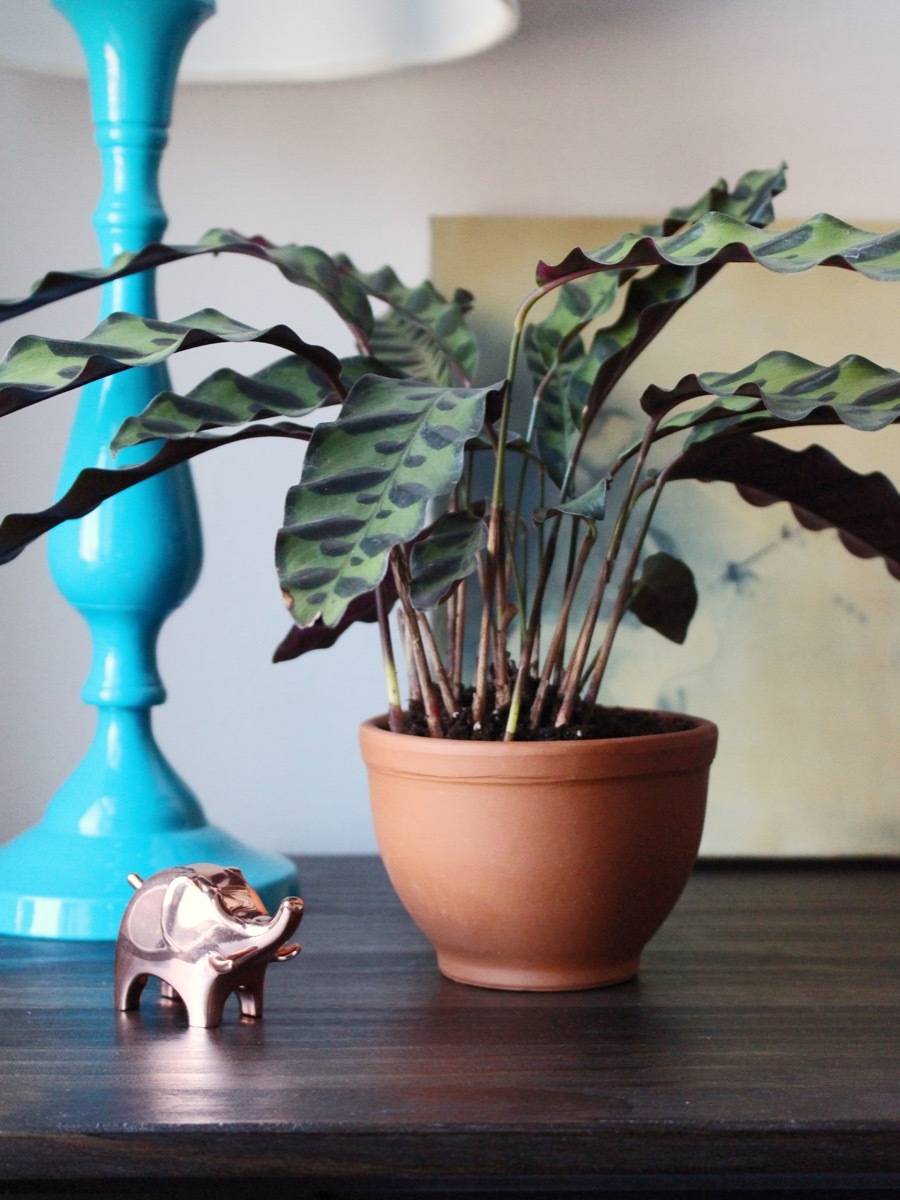
Peacock Plant (Calathea)
- Safe for dogs
- Safe for cats
- Indirect sunlight
- Frequent watering / keep soil moist
To be graced by the gorgeous presence of the Calathea, you have to work a bit harder to keep it happy. They require frequent watering without being over-watered. As they originated from the tropics, they enjoy frequent showers and humid conditions.
If you’re willing to keep up with the routine, the Peacock Plant will flourish in low-light situations, blessing your space with high-contrasting striped leaves. The large, dark foliage are powerful, but with hints of pinks and stripes of white, a soft undertone can make this plant versatile in plenty of different interiors.
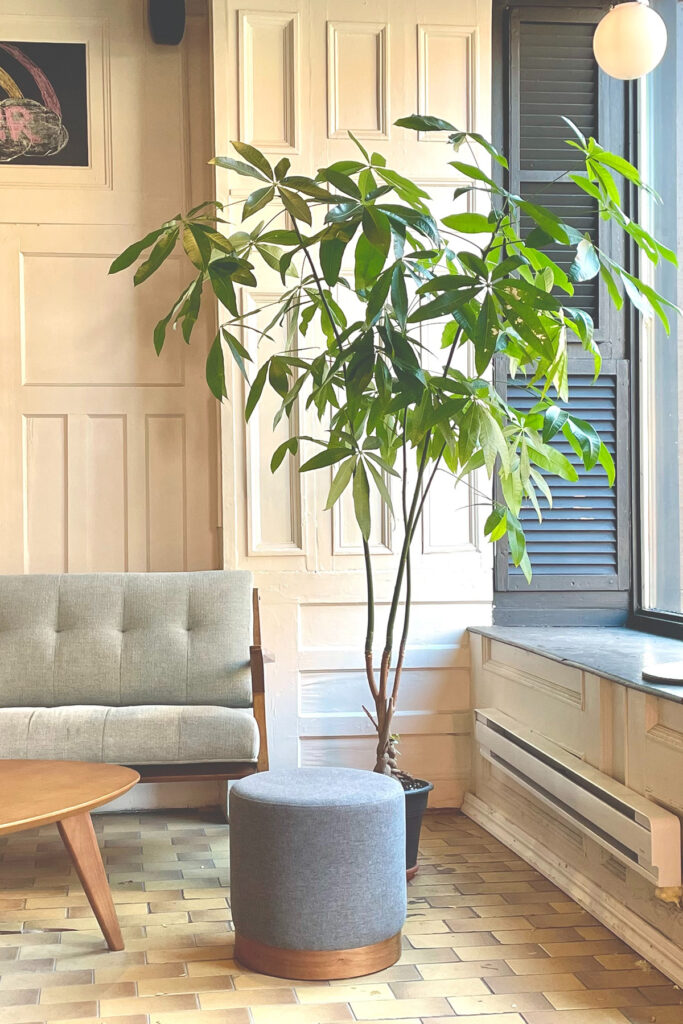
Money Tree (Pachira aquatica)
- Safe for dogs
- Safe for cats
- Bright, indirect sunlight
This unique and resilient houseplant, often associated with prosperity and good fortune, requires some simple yet essential care to thrive.
Place your money tree in bright, indirect sunlight, as it enjoys a balance between light and shade. Watering should be moderate; allow the top inch of soil to dry out between waterings to prevent overwatering, which can lead to root rot.
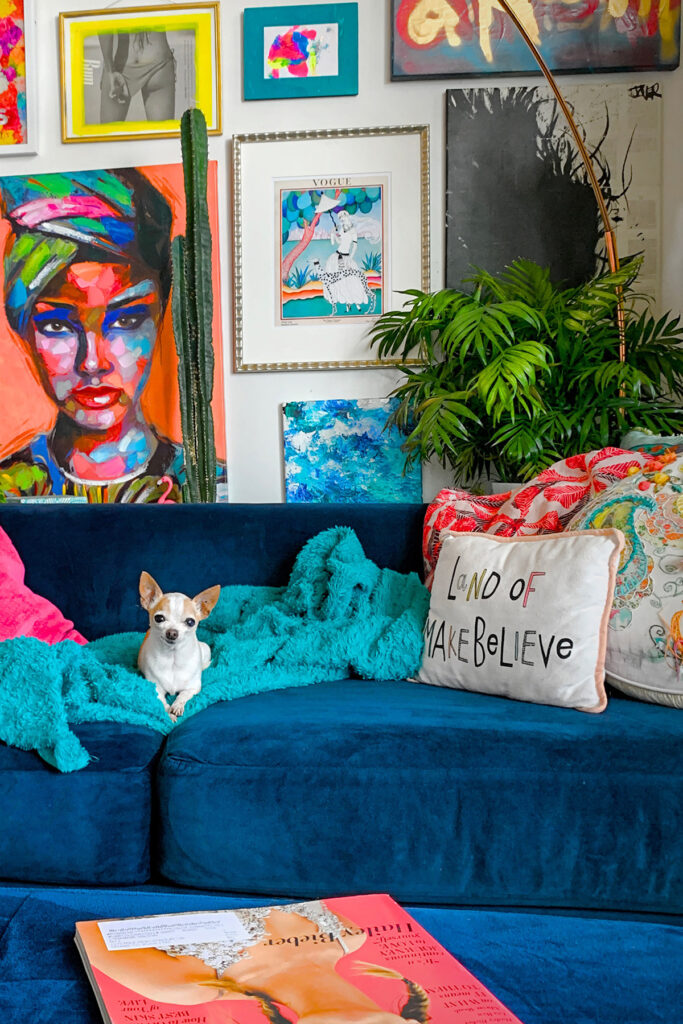
Parlor Palm (Chamaedorea elegans)
- Safe for dogs
- Safe for cats
- Low to medium indirect light
The Parlor Palm, also know as the Miniature Fish Tail Dwarf Palm, Good Luck Palm or Bamboo Palm, is a popular choice for indoor plant enthusiasts. This elegant and adaptable houseplant thrives in low to medium indirect light, making it an excellent addition to spaces with limited natural light. When it comes to watering, it’s best to let the top inch or so of soil dry out between waterings.
To maintain its lush appearance, occasionally mist the fronds of these pet-friendly houseplants to increase humidity, especially in dry indoor environments. This palm loves high humidity and would do great in a bathroom.
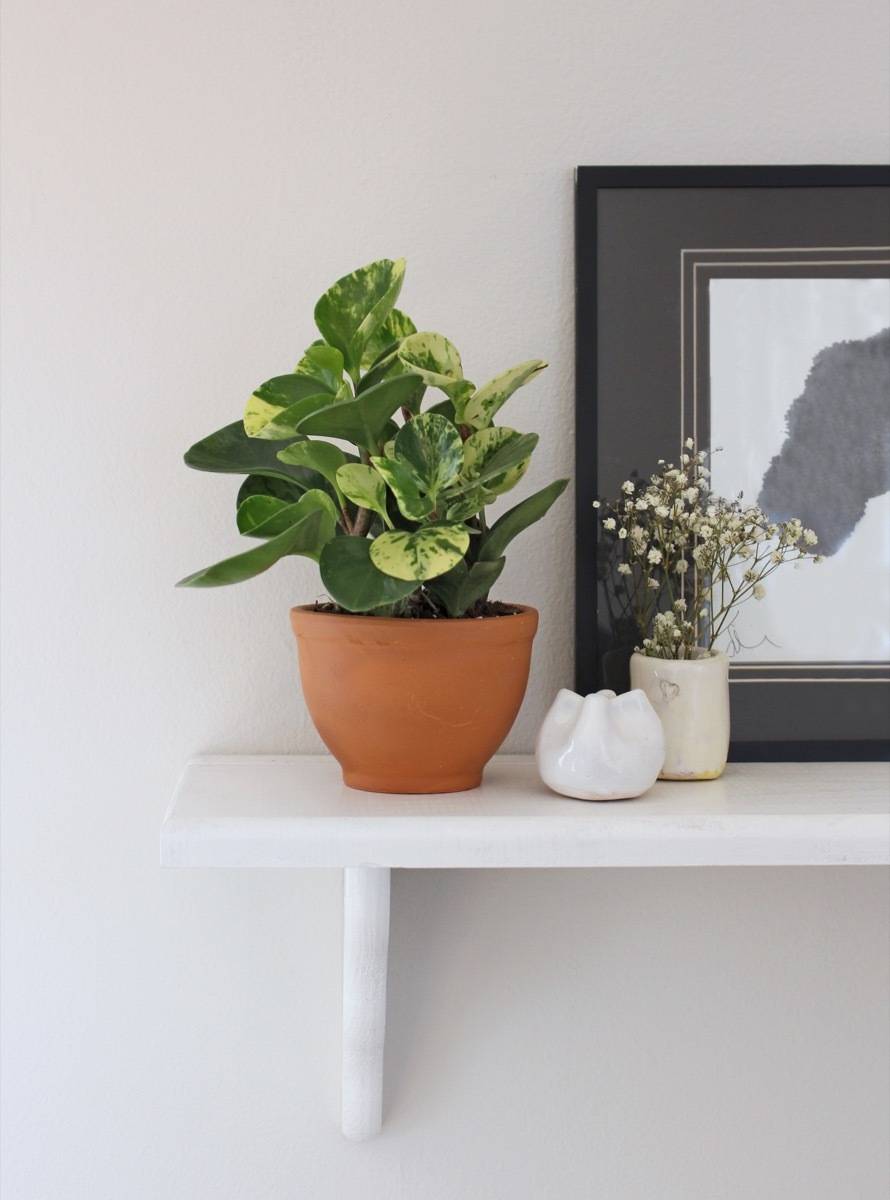
Baby Rubber Plant / American Rubber Plant / Pepper Face (Peperomia obtusifolia)
- Safe for dogs
- Safe for cats
- Indirect sunlight
- Infrequent watering, water only when needed
At first glance, the Peperomia is seemingly understated. What it lacks in drama, it makes up for in stability. It requires water only when completely dry, and its thick branches allow it to withstand periods of drought (also known as having a black thumb)!
They have short roots, so keep them in shallow or small pots. The smooth, rubbery leaves add color to a modern home, but its basic shape and size allow it to co-exist with other plants in any design space.
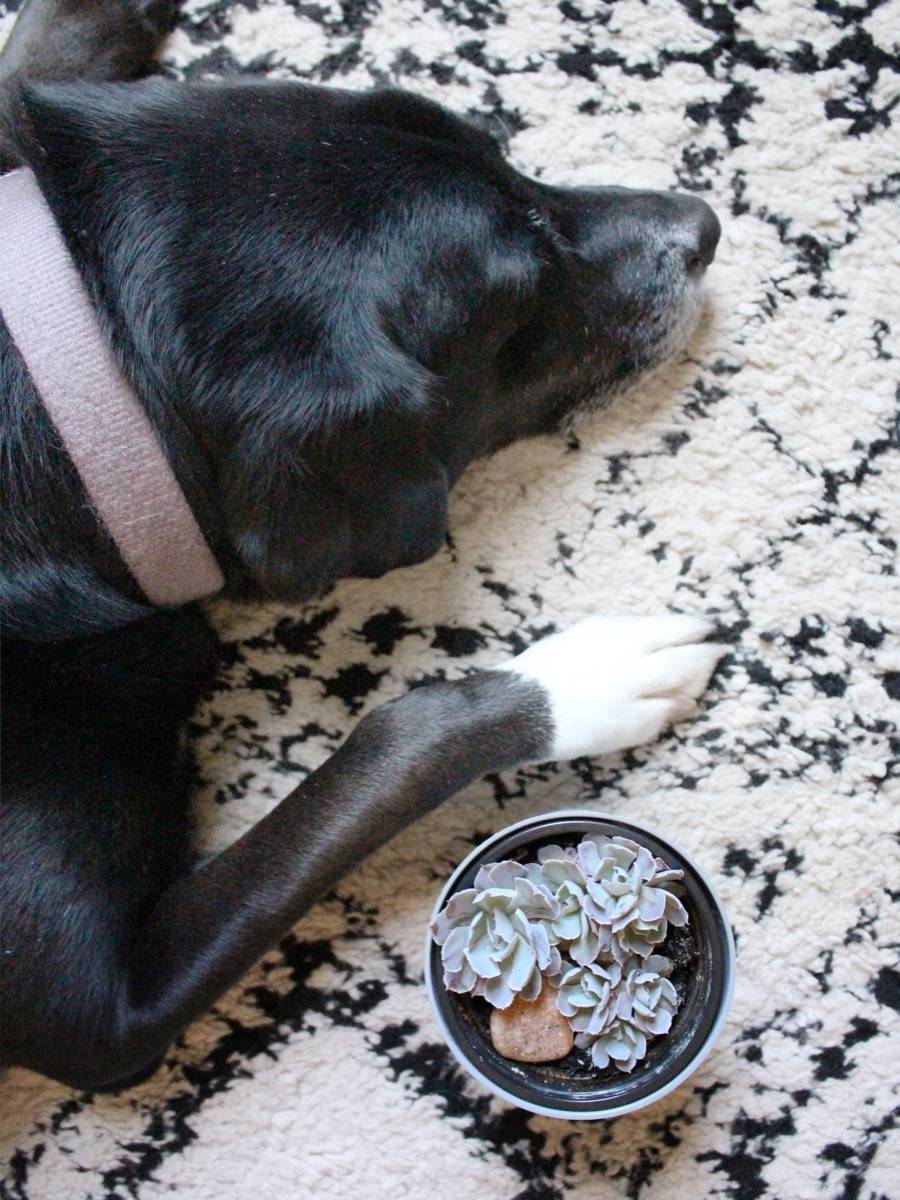 Several Types of Succulents
Several Types of Succulents
- Blue Echeveria (Echeveria glauca)
- Zebra Haworthia (Haworthia pumila)
- Burro’s Tail (Sedum morganianum)
I have both a dog and a cat, and neither have any interest in the succulents I bring into my home. That being said, play it safe and research your succulents to see if they qualify as pet-friendly plants.
As long as they get ample light everyday, succulents only need water 1-2 times a week. Coming in a variety of colors, shapes, and sizes, there’s a succulent out there for every room in your home.
Most Toxic Plants for Pets
Several plants are toxic to pets and can pose a serious risk to their health if ingested. Here are some of the most toxic plants for pets:
- Lilies: Various species of lilies, especially Easter lilies, tiger lilies, and daylilies, are highly toxic to cats and can cause kidney failure even in small amounts.
- Azaleas and Rhododendrons: These flowering plants contain toxins that can lead to vomiting, diarrhea, and potentially more severe symptoms in dogs and cats.
- Oleander: All parts of the oleander plant are extremely toxic to pets and can cause heart problems, gastrointestinal issues, and even death if ingested.
- Sago Palm: This popular houseplant is highly toxic to dogs and cats, with ingestion leading to severe liver damage, seizures, and often fatal consequences.
- Autumn Crocus: The autumn crocus can cause severe gastrointestinal distress, kidney and liver damage, and even death in pets.
- Foxglove: Ingesting foxglove can result in heart problems, vomiting, diarrhea, and potentially fatal cardiac arrhythmias in pets.
- Castor Bean Plant: The castor bean plant contains ricin, a highly toxic substance. Ingesting even a small amount can be fatal to pets.
- Dieffenbachia: This common houseplant contains oxalates that can cause oral irritation, drooling, and difficulty swallowing in pets.
- Philodendron: Many philodendron varieties contain calcium oxalate crystals that can lead to oral irritation, swelling, and digestive issues in pets.
- Yew: Yew plants are highly toxic and can cause sudden death in pets due to their effect on the heart.
- Aloe Vera: Toxic to both cats and dogs, resulting in lethargy and diarrhea.
It’s crucial for pet owners to be aware of these toxic plants and take precautions to ensure your pets are not in danger of ingesting them. If you suspect your pet has ingested a toxic plant, contact your veterinarian or an emergency animal poison control hotline immediately for guidance and treatment.
If you’re ever unsure about bringing a plant into your home, you can reference the pet-safe plant ASPCA Toxic Plants Database, which contains hundreds of species of plants, and any dangers they may pose to the animals in your life.
